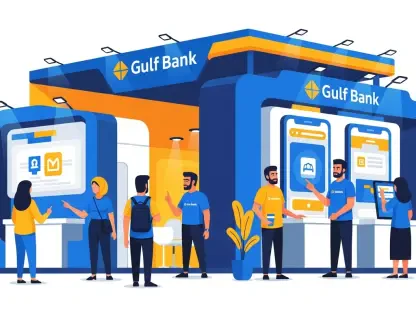Open Banking is revolutionizing the financial landscape in the United States, driven by regulatory advancements and the rise of fintech innovations. This transformation is empowering consumers with greater control over their financial data, fostering competition, and paving the way for new financial services. Let’s delve into the key aspects of this transformation and the significant players involved.
Regulatory Milestones Shaping Open Banking
The Dodd-Frank Act and Section 1033
The journey of Open Banking in the US began with the Dodd-Frank Act of 2010, enacted in response to the 2008 financial crisis. A crucial component of this act, Section 1033, mandated that financial service providers furnish customers with their financial data. This provision laid the groundwork for Open Banking principles, emphasizing consumer rights and data accessibility. The primary goal was to create a transparent financial environment where consumers could make informed decisions based on their financial records.
As the financial landscape evolved, the need for more explicit regulations to protect consumer data and foster innovation became evident. The Dodd-Frank Act’s Section 1033 played a pivotal role in setting these regulatory foundations. However, the practical implementation of these principles required further institutional support to address emerging technologies and market dynamics. Consequently, subsequent regulatory initiatives, particularly those spearheaded by the CFPB, aimed to streamline these principles and create a robust framework for Open Banking in the US.
CFPB’s Role and Recent Developments
In October 2020, the Consumer Financial Protection Bureau (CFPB) proposed a rule-making initiative under Section 1033, marking a significant step toward formalizing Open Banking regulations. This initiative gained further momentum with a White House executive order in July 2021, reinforcing the notion that consumers should have seamless rights to transport their financial data. The culmination of these efforts was seen in October 2023, when the CFPB released a proposed rule for Personal Financial Data Rights, designed to expedite the shift to Open Banking.
This landmark rule aimed to provide clearer guidelines and stronger protections for consumers, ensuring they have greater control over their financial information. With the finalized regulation, consumers can now consent to data usage by specific third parties, enhancing data privacy and security. By providing a standardized framework, the CFPB’s rule encourages financial institutions to adopt more consistent practices, ultimately fostering a more inclusive financial ecosystem. As a result, both financial institutions and consumers are better positioned to engage with innovative fintech solutions and unlock new possibilities in the US financial landscape.
Transition from Market-Driven to Regulatory Framework
Market-Driven Open Banking
Before the final rule, Open Banking in the US was largely driven by market dynamics. Fintech companies leveraged Section 1033 of the Dodd-Frank Act to offer innovative financial services, creating a competitive landscape. This environment fostered the growth of key fintech players, who provided various Open Banking-powered solutions, ranging from data aggregation and financial management tools to secure, direct payment alternatives and credit risk analysis. These companies played a crucial role in demonstrating the potential of Open Banking and driving consumer adoption.
The market-driven approach allowed fintechs to experiment and innovate rapidly, catering to consumers’ evolving needs and preferences. However, the absence of standardized regulations meant that practices varied significantly across institutions, leading to inconsistencies and potential risks. As the fintech sector grew, so did the need for a coherent regulatory framework that would ensure consumer protection and maintain a level playing field. This transition from a market-driven to a regulatory framework aims to address these challenges while preserving the innovative spirit that characterizes the fintech industry.
Impact of the New Regulation
The new regulatory framework introduced by the CFPB represents a paradigm shift. This regulation mandates standardized access to financial services across all banks, ensuring a level playing field. Specifically, it allows consumers to consent to data usage by specific third parties while strictly prohibiting secondary uses beyond the initial consent. Additionally, if consumers do not renew their consent after 12 months, third parties must cease data collection and delete previously authorized data. This regulation not only strengthens consumer privacy but also encourages more responsible data management practices among financial institutions.
With the standardized framework in place, consumers can now access a broader range of innovative financial services with confidence. Fintech companies are poised to leverage these regulations to develop new products and services that cater to diverse financial needs. Moreover, the regulation enhances transparency and trust within the financial ecosystem, fostering a collaborative environment where traditional banks and fintechs can coexist and thrive. The ultimate goal of this regulatory shift is to create a more inclusive and efficient financial landscape that benefits all stakeholders, from consumers to financial service providers.
Stakeholder Reactions and Controversies
Positive Reception from Fintechs and Consumers
The final rule has been positively received by fintech companies and consumers due to its potential to foster financial innovation and competition. Fintechs are now better positioned to offer new financial services and competitive pricing in transactions, enhancing consumer choice and convenience. This regulatory clarity is expected to drive further innovation in the financial sector, benefiting consumers with more personalized and efficient financial solutions. By empowering consumers with greater control over their financial data, the CFPB’s rule aligns with the broader trend towards digital transformation and data-driven decision-making.
Consumers, in particular, stand to gain significantly from the enhanced transparency and accessibility of their financial data. They can now seamlessly integrate various financial services, track their spending, and make informed financial decisions. The increased competition among fintechs also means that consumers can expect more diverse and cost-effective offerings. Overall, the positive reception from fintechs and consumers highlights the transformative potential of Open Banking in creating a more dynamic and responsive financial ecosystem.
Opposition from Traditional Banks
Despite the positive reception from fintechs and consumers, the new regulation has faced opposition from traditional banking institutions. Shortly after the rule’s announcement, the Bank Policy Institute and Kentucky Bankers Association filed a lawsuit against the CFPB, citing concerns about customer privacy and account security. Traditional banks argue that the new regulation could expose consumers to increased risks, highlighting the ongoing balance between innovation and security. They emphasize the need for stringent safeguards to protect sensitive financial information from potential breaches and misuse.
Traditional banks also raise concerns about the operational challenges and costs associated with implementing the new regulations. They argue that the mandated data sharing could disrupt existing business models and require significant investments in infrastructure and technology. Moreover, banks fear that increased data accessibility could lead to greater vulnerability to cyber threats and fraudulent activities. As the financial industry navigates these complexities, the dialogue between regulators, fintechs, and traditional banks will play a crucial role in shaping the future of Open Banking and addressing the concerns of all stakeholders.
Key Players in the Open Banking Ecosystem
Leading Fintech Innovators
Several key players have emerged as leaders in the Open Banking ecosystem in the US, driving innovation and enhancing consumer experiences:
Plaid: Known for its data aggregation capabilities, Plaid connects consumer accounts to fintech apps and financial institutions, enabling seamless financial management. By providing secure and reliable access to financial data, Plaid has become a cornerstone of the Open Banking movement, facilitating a wide range of applications from budgeting tools to investment platforms.
MX: Specializes in data aggregation, offering API-driven solutions to improve customer understanding of financial data and enhance financial wellness. MX’s focus on data-driven insights empowers consumers to make better financial decisions and achieve their financial goals. Their innovative approach to data management and visualization sets them apart in the competitive fintech landscape.
Yodlee (Envestnet): One of the oldest data aggregators, Yodlee focuses on privacy and security, providing consumer-permissioned data solutions for various financial services. With decades of experience, Yodlee has built a robust platform that integrates seamlessly with financial institutions, enabling secure and compliant data sharing. Their commitment to privacy and security ensures that consumers’ financial information is protected at all times.
Expanding Services and Innovations
Other notable players in the Open Banking ecosystem continue to drive advancements and expand their service offerings:
Finicity (Mastercard): Provides data aggregation for lending and personal finance, helping streamline credit decisions and improve financial inclusion. By leveraging Open Banking principles, Finicity empowers consumers to access credit more easily and transparently. Their partnership with Mastercard further enhances their capabilities, allowing them to offer innovative payment and data solutions on a global scale.
Akoya: A bank-backed platform offering secure data sharing without passwords, enhancing security and control for consumers. Akoya’s unique approach to data sharing eliminates the need for passwords, reducing the risk of data breaches and unauthorized access. This innovative model ensures that consumers retain full control over their financial information, while financial institutions can provide more secure and efficient services.
Flinks: Offers data aggregation and analytics with a focus on credit risk analysis and other financial insights, supporting better financial decision-making. Flinks’ advanced analytics capabilities enable financial institutions to assess creditworthiness more accurately and efficiently. By providing actionable insights, Flinks helps consumers access credit more easily and make informed financial decisions.
The Future of Open Banking in the US
Potential for Open Finance
The formalization of Open Banking regulations in the US is set to pave the way for Open Finance, where consumers can access a broader range of financial services beyond traditional banking. This includes insurance, investments, and other financial products, all integrated seamlessly through secure data sharing. The potential for Open Finance promises to further democratize financial services, offering consumers more comprehensive and tailored financial solutions. As the financial ecosystem evolves, the integration of diverse financial products and services will enable consumers to manage their financial lives more holistically and efficiently.
The transition to Open Finance will also drive greater collaboration between financial institutions, fintechs, and other service providers. By leveraging shared data and insights, these entities can develop innovative solutions that cater to the unique needs of different consumer segments. Moreover, the increased transparency and accessibility of financial information will empower consumers to make more informed decisions, ultimately leading to better financial outcomes. As Open Finance gains traction, the US financial landscape is poised to become more inclusive, competitive, and dynamic.
Balancing Innovation and Security
Open Banking is dramatically reshaping the financial landscape in the United States, driven by evolving regulations and the surge of fintech innovations. This transformation grants consumers unprecedented control over their financial data, sparking increased competition among financial institutions, and laying the groundwork for a host of new financial services. At its core, Open Banking allows consumers to securely share their financial information with third-party providers, leading to more personalized and efficient financial products and services. With regulatory bodies pushing for more transparent and consumer-friendly practices, and fintech companies continuously introducing cutting-edge solutions, Open Banking is becoming a crucial element in modern finance. Major banks, financial institutions, and innovative startups are key players in this revolution, leveraging technology to enhance financial connectivity and inclusivity. As Open Banking gains momentum, it promises to unlock a new era of financial empowerment and innovation for both consumers and businesses in the United States.









